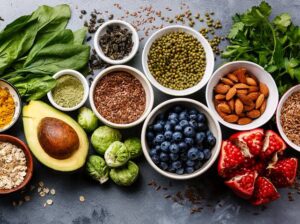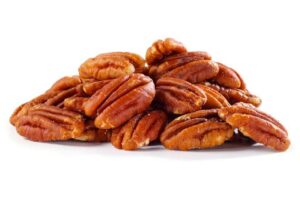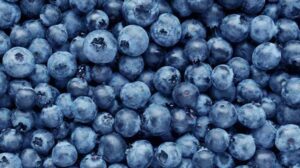Antioxidants are compounds found in foods that are produced by your body. They help protect your cells from free radicals, which are potentially harmful molecules. When free radicals accumulate, they can lead to oxidative stress. This has the potential to harm your DNA and other important structures in your cells.
Unfortunately, chronic oxidative stress raises your risk of developing chronic diseases such as heart disease, type 2 diabetes, and cancer.
Fortunately, eating an antioxidant-rich diet can help increase your blood antioxidant levels, allowing you to fight oxidative stress and lower your risk of these diseases. Several tests are used by scientists to determine the antioxidant content of foods.
The FRAP (ferric reducing ability of plasma) analysis is one of the most effective tests. It assesses the antioxidant content of foods based on their ability to neutralize a specific free radical. The higher the FRAP value, the higher the antioxidant content of the food.
The following are the top 8 antioxidant-rich foods.
1. Dark Chocolate
Dark chocolate is nutritious, which is great news for chocolate lovers. It contains more cocoa and minerals than regular chocolate, as well as more antioxidants and minerals.
Dark chocolate contains up to 15 mmol of antioxidants per 3.5 ounces, according to the FRAP analysis (100 grams). This is more than blueberries and raspberries, which have up to 9.2 and 2.3 mmol of antioxidants per serving size, respectively. Furthermore, antioxidants found in cocoa and dark chocolate have been linked to numerous health benefits, including reduced inflammation and risk factors for heart disease.
A review of ten studies, for example, looked at the relationship between cocoa consumption and blood pressure in both healthy people and those with high blood pressure. Consuming cocoa-rich products, such as dark chocolate, reduced systolic blood pressure (the upper number) by an average of 4.5 mmHg and diastolic blood pressure (the lower number) by an average of 2.5 mmHg.
Another study discovered that dark chocolate may lower the risk of heart disease by increasing blood antioxidant levels, increasing “good” HDL cholesterol levels, and preventing “bad” LDL cholesterol from oxidizing. Oxidized LDL cholesterol is dangerous because it causes inflammation in the blood vessels, which increases the risk of heart disease.
2. Pecans
Nuts of the pecan variety are found throughout Mexico and South America. They’re packed with beneficial antioxidants and healthy fats. As much as 10.6 mmol of antioxidants can be found in just 3.5 ounces of pecans, according to FRAP testing (100 grams).
Pecans also aid in increasing blood levels of antioxidants. Blood antioxidant levels were shown to be significantly higher in persons who got 20% of their daily calories from pecans, according to one study (7).
Another study found that between two to eight hours after eating pecans, people’s oxidized blood LDL levels dropped by 26-33%. Excess oxidized LDL cholesterol in the blood is a potential contributor to cardiovascular disease. Pecans are high in healthy fats, but they also have a lot of calories. For this reason, limiting your intake of pecans is recommended.
3. Blueberries
Though low in calories, blueberries are rich in beneficial minerals and antioxidants.
Blueberries have up to 9.2 mmol of antioxidants per 3.5 ounces, following FRAP testing (100 grams). Blueberries have been shown in multiple studies to have the highest concentration of antioxidants of any widely eaten fruit or vegetable.
Furthermore, evidence from cell culture and animal studies suggest that blueberry antioxidants can halt the normal age-related loss in brain function. The antioxidants in blueberries have been hypothesized to be responsible for this result. Researchers believe that they accomplish this by scavenging potentially dangerous free radicals, lowering inflammatory responses, and altering the expression of relevant genes.
It has also been proven that the antioxidants in blueberries, particularly the anthocyanins, reduced risk factors for cardiovascular diseases, such as LDL cholesterol and blood pressure.
4. Strawberries
It’s no exaggeration to say that strawberries are one of the most sought-after fruits in the world. They’re delicious, adaptable and full of healthy nutrients like vitamin C and antioxidants (13).
One FRAP study found that each 3.5-ounce serving of strawberries contained up to 5.4 mmol of antioxidants (100 grams). Anthocyanins, the antioxidants responsible for strawberries’ red color, are also present. Those strawberries that have more of the pigment anthocyanin in them tend to be more vibrant in color.
The risk of heart disease may be lowered by anthocyanins because they lower “bad” LDL cholesterol while increasing “good” HDL cholesterol, according to studies. Those with heart disease or high LDL levels benefited greatly from taking an anthocyanin supplement, according to a meta-analysis of 10 studies.
5. Artichoke
Although they are a healthy and tasty addition to any meal, artichokes are not a staple in most North American diets. However, their usage as a treatment for liver diseases like jaundice dates back to ancient times.
Artichokes are an excellent food choice since they include a lot of beneficial nutrients like fiber, minerals, and antioxidants. In a FRAP study, it was found that each 3.5-ounce serving of artichokes could provide up to 4.7 mmol of antioxidants (100 grams).
Chlorogenic acid, an antioxidant, is abundant in artichokes. Chlorogenic acid has been linked to a lower chance of developing cancer, type 2 diabetes, and cardiovascular disease thanks to its antioxidant and anti-inflammatory properties. How you cook your artichokes can affect how rich in antioxidants they end up becoming.
An artichoke’s antioxidant content could increase by as much as 15 times if steamed, and by as much as 8 times if boiled. However, the antioxidant value of artichokes may decrease during the frying process.
6. Goji Berries
Goji berries are the dried fruits of two plants that are closely related, Lycium barbarum and Lycium chinense. They have been used in traditional Chinese medicine for 2,000 years.
Goji berries are frequently touted as a superfood due to their high vitamin, mineral, and antioxidant content. According to FRAP analysis, 3.5 ounces of goji berries contain 4.3 mmol of antioxidants (100 grams).
Goji berries also contain Lycium barbarum poly and saccharides, which are unique antioxidants. These have been associated with a lower risk of heart disease and cancer and may aid in the prevention of skin aging. Furthermore, goji berries may be particularly helpful in increasing blood antioxidant levels.
In one study, healthy older persons drank a goji berry drink made with milk every day for 90 days. Their blood antioxidant levels were increased by 57% by the end of the research. While goji berries are healthful, they can be costly to consume regularly.
Furthermore, there has only been a felittleesearch on the effects of goji berries on humans. While these studies suggest their health advantages, further human-based research is required.
7. Strawberries
Raspberries are a soft, tart berry that is commonly used in sweets. They are high in dietary fiber, vitamin C, manganese, and antioxidants (28). According to FRAP data, raspberries contain up to 4 mmol of antioxidants per 3.5 ounces (100 grams).
Several studies have connected raspberries’ antioxidants and other components to a lower risk of cancer and heart disease. In one test-tube investigation, antioxidants and other components in raspberries killed 90% of stomach, colon, and breast cancer cells.
According to an analysis of five research, the anti-inflammatory and antioxidant characteristics of black raspberries may slow down and decrease the symptoms of a variety of malignancies. Furthermore, the antioxidants included in raspberries, particularly anthocyanins, may help to reduce inflammation and oxidative stress. This could lower the risk of heart disease.
Having said that, the majority of the data for raspberries’ health benefits cocomerom test-tube studies. MoThe more human study is required before recommendations may be made.
8. Beans
Beans are a broad category of legumes that are both cheap and nutritious. They are also extremely high in fiber, which can help you maintain regular bowel motions. Beans are extremely high in antioxidants, making them one of the greatest vegetable sources. According to FRAP, green broad beans contain up to 2 mmol of antioxidants per 3.5 ounces (100 grams).
Furthermore, some beans, such as pinto beans, contain an antioxidant known as kaempferol. This antioxidant has been associated with numerous health advantages, including reduced chronic inflammation and cancer development suppression.
Several animal studies, for example, have discovered that kaempferol may inhibit the formation of malignancies in the breast, bladder, kidneys, and lungs. However, given the majority of the research supporting kaempferol’s advantages has been conducted in animals or test tubes, more human-based studies are required.






